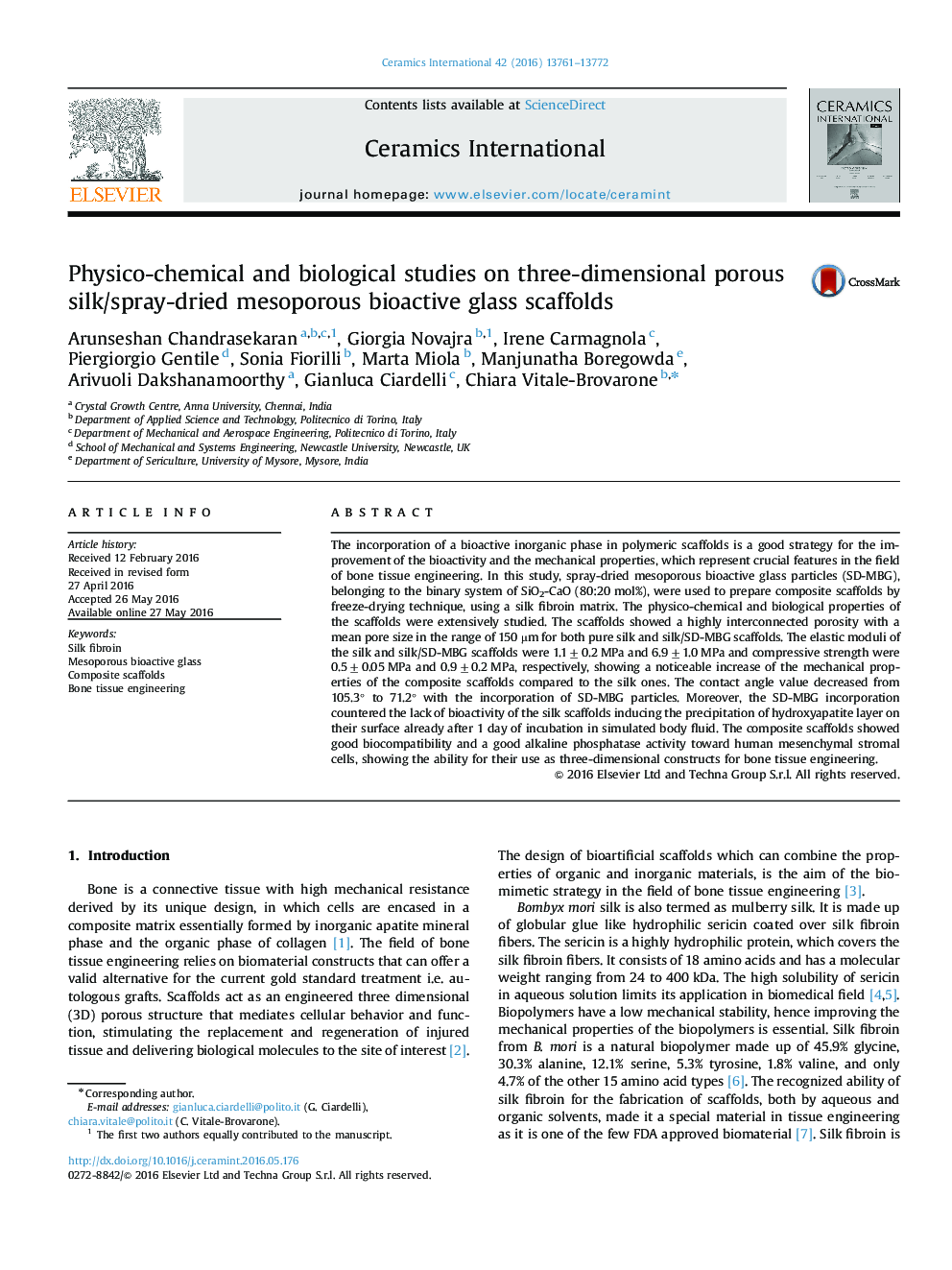| کد مقاله | کد نشریه | سال انتشار | مقاله انگلیسی | نسخه تمام متن |
|---|---|---|---|---|
| 1458538 | 989579 | 2016 | 12 صفحه PDF | دانلود رایگان |
The incorporation of a bioactive inorganic phase in polymeric scaffolds is a good strategy for the improvement of the bioactivity and the mechanical properties, which represent crucial features in the field of bone tissue engineering. In this study, spray-dried mesoporous bioactive glass particles (SD-MBG), belonging to the binary system of SiO2-CaO (80:20 mol%), were used to prepare composite scaffolds by freeze-drying technique, using a silk fibroin matrix. The physico-chemical and biological properties of the scaffolds were extensively studied. The scaffolds showed a highly interconnected porosity with a mean pore size in the range of 150 µm for both pure silk and silk/SD-MBG scaffolds. The elastic moduli of the silk and silk/SD-MBG scaffolds were 1.1±0.2 MPa and 6.9±1.0 MPa and compressive strength were 0.5±0.05 MPa and 0.9±0.2 MPa, respectively, showing a noticeable increase of the mechanical properties of the composite scaffolds compared to the silk ones. The contact angle value decreased from 105.3° to 71.2° with the incorporation of SD-MBG particles. Moreover, the SD-MBG incorporation countered the lack of bioactivity of the silk scaffolds inducing the precipitation of hydroxyapatite layer on their surface already after 1 day of incubation in simulated body fluid. The composite scaffolds showed good biocompatibility and a good alkaline phosphatase activity toward human mesenchymal stromal cells, showing the ability for their use as three-dimensional constructs for bone tissue engineering.
Journal: Ceramics International - Volume 42, Issue 12, September 2016, Pages 13761–13772
